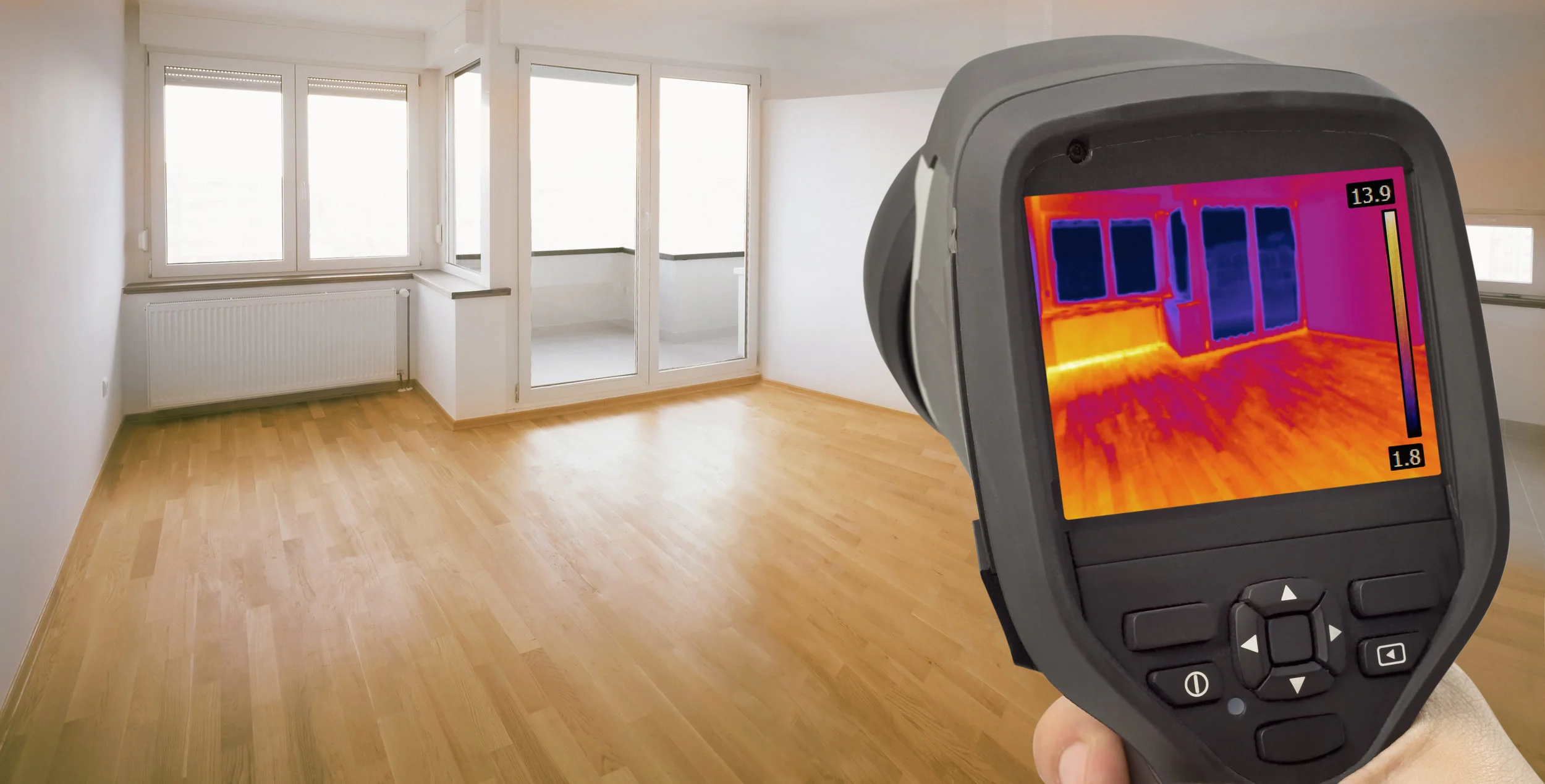Above left infrared image shows missing insulation invisible to the naked eye. Note the clearly visible wall studs and roof trusses in the IR half of the photo.
Why Insist on an Inspector with an Infrared Camera?
An infrared camera gives inspectors the best chance of finding the most elusive of problems. Nothing is perfect and even Infrared has its limitations, even IR can't find a roof leak if it hasn't rained in a month, but it can find a small leak before it becomes major, or a leak hidden by an unscrupulous homeowner.
What is infrared (IR) technology?
Using a medical analogy, it's a bit like an MRI or x-ray for your home. More specifically, our infrared camera detects minute differences in temperature and in many cases allow us to find things that are not normally detectable. In your home, our infrared technology might detect:
The presence of moisture
Lack of insulation
Air duct leaks
Electrical hot spots that may pose a fire danger
Improperly functioning fixtures and equipment
Massive pest infestations
Infrared photo of an overheating wire, a fire hazard.
Most inspectors do not include the use of infrared in their inspection services. They claim the technology to be too expensive. Some inspectors even try to discourage the use of infrared, making up every excuse imaginable to explain why they do not offer this very important protection as a part of their services. While there are limitations to infrared, and it cannot completely remove the risk of a hidden problem in your home, our infrared camera significantly increases our effectiveness as a home inspector, which is why we use it on every home inspection we perform.
Above is a flat roof leak showing trapped water in the evening. Wet insulation cools off slower and shows up as a hot spot.
The bottom line is simple: a bad inspector with an infrared camera is still a bad inspector. A good inspector with IR is an even better inspector. Choose a qualified, experienced inspector with IR and you have the best of both worlds.
If you have any questions, please give us a call at (239) 354-3540 and we’ll be glad to assist you.



